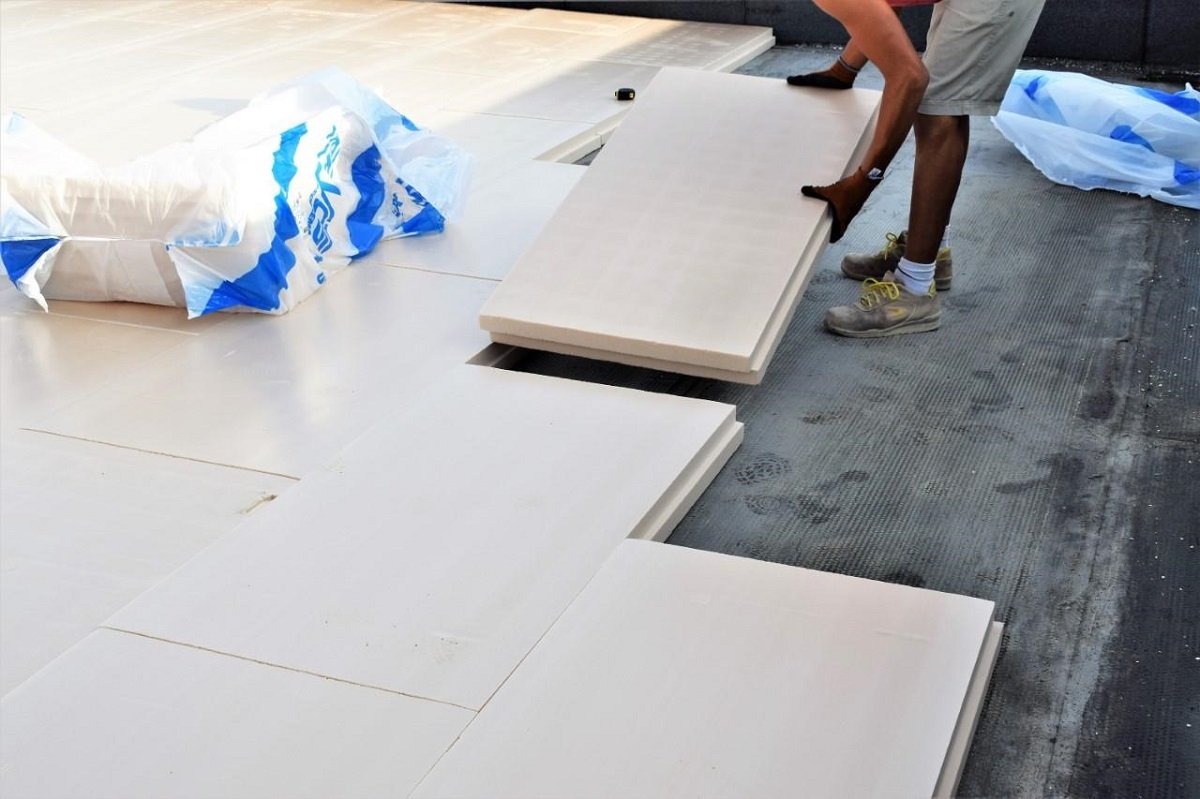Propiedades técnicas del aislamiento de XPS: rendimiento térmico y claves esenciales

The insulation of XPS, or extruded polystyrene, has established itself as one of the most effective materials for improving energy efficiency in buildings and civil works. Due to its excellent insulation capacity, high resistance to moisture, and durability, this material is increasingly used in projects that prioritize sustainability and thermal comfort. To enhance your knowledge on this topic, you can refer to this article on home thermal insulation.
In this article, we delve into its technical characteristics, manufacturing process, most common uses, regulatory certifications, advantages over other insulators, and many other key considerations. If you are looking for a material that combines thermal performance with structural strength and long lifespan, XPS may be the ideal solution for your project.
What is XPS insulation?
Extruded polystyrene, also known as XPS, is a type of rigid closed-cell structure made from polystyrene resins through an extrusion process. This cellular configuration gives it its most notable properties: exceptional thermal insulation, very low water absorption, and high mechanical strength.
We are dealing with a thermoplastic product with suitable characteristics for demanding applications, from roofs and façade claddings to floors and buried walls. It also makes it easy to handle and install material, reducing labor time and costs. For more information on the benefits of different materials, you can check out our guide on applications of extruded polystyrene.
Technical properties of XPS

XPS is known for a combination of physical and technical properties that make it one of the most reliable materials in thermal insulation:
Thermal conductivity
The thermal conductivity of XPS ranges from 0.029 to 0.036 W/M · K, depending on the foaming gas used during its manufacturing. This low conductivity allows for high thermal resistance with low thicknesses. Thermal resistance (RD.) is calculated using the formula: RD. = D / λ, where D is the thickness of the product and λ is its thermal conductivity coefficient. For a more detailed comparison, refer to our article on insulation comparison.
Compression resistance
XPS offers a standard compression resistance of 300 kPa with enhanced options reaching up to 700 kPa. This makes it ideal for withstanding heavy loads in pavements, passenger cases, or areas with regular traffic.
Water absorption
Due to its completely closed-cell structure, XPS has a total immersion water absorption of less than 0.7%. Even in more aggressive conditions, such as moisture diffusion in inverted roofs, absorption does not exceed 3%. If you want more information on how other materials interact with moisture, we recommend checking out our articles on rock wool insulation.
Dimensional stability and deformation
After being exposed for 48 hours at 70°C and 90% humidity, dimensional changes in XPS do not exceed 5%. Additionally, when subjected to compression and constant temperature, its deformation remains below 5% even after 168 hours.
Perpendicular traction
XPS withstands a perpendicular traction force on its faces of over 200 kPa, providing additional structural safety.
Fire reaction
Classified as Euroclass E, it is a self-extinguishing product that does not generate flaming droplets or spread flames, although it is not the most recommended for areas with a high fire demand.
Freezing and thawing
After 300 cycles of freeze-thaw, the loss of strength is less than 10% and its water absorption is less than 1%, demonstrating its high durability even in extreme weather conditions.
Water resistance
XPS has a water vapor diffusion resistance factor (µ) greater than 150, behaving as an extremely effective barrier against environmental moisture.
XPS manufacturing process

XPS is produced by extrusion, a process that ensures a homogeneous internal structure and consistent properties throughout the panel. The main phases are described below:
- Extrusion: Polystyrene beads are fed into an extruder where they are melted with additives.
- Expansion: A controlled blowing agent is injected, forming the closed-cell structure of the product.
- Cooling and stabilization: The material is allowed to cool and rest to acquire its final shape and dimensions.
- Finishing: Panels are cut and edges are profiled to facilitate assembly and minimize thermal bridges.
XPS applications in construction
XPS finds various applications in both new construction and energy retrofitting, adapting to different construction needs.
Flat and sloped roofs
Its high thermal and compression resistance makes the material suitable for insulating flat and sloped roofs. In inverted flat roofs, it is placed under waterproofing, acting as an additional protective barrier. For a deeper dive into sustainable construction, check out our article on bioclimatic houses and thermal insulation.
Façades and perimeter walls
In ventilated façades and exterior walls, XPS integrates easily into claddings, improving thermal performance without affecting interior space. Additionally, it protects against moisture and enhances interior comfort.
Radiant floors and pavements
Due to its rigidity and dimensional stability, XPS is an excellent support under floors and radiant floors, overall preventing thermal losses and ensuring homogeneous heat distribution.
Foundations and buried walls
XPS maintains its insulating properties in wet and pressure conditions, making it ideal for insulating foundations, basements, or walls in contact with the ground. This makes it an essential material in modern construction.
XPS systems with aldeas: insulation abroad
The thermal insulation system (aldeas) with XPS boards offers a complete solution to reduce a building’s energy demand. It involves adhering XPS boards to the existing façade and coating them with mortar and decorative finishes.
This system avoids thermal bridges, condensation, and internal thermal movements, in addition to improving aesthetics and increasing property value. For more information on maintaining these systems, visit our article on maintenance in aerothermal systems.
Available thicknesses and recommended use
XPS is marketed in various thicknesses to adapt to the insulation requirements of each construction area.
- 1 cm: Ideal for light renovations or interiors where space is limited.
- 2 cm: Balanced option between thermal efficiency and ease of installation, recommended for walls, ceilings, or floors.
- 3 cm or more: Used outdoors, on roofs and areas with extreme weather requiring high thermal insulation.
Certifications and regulations for XPS
XPS must comply with European product regulations, such as EN 13164 and EN 13172, which establish technical requirements and evaluation procedures.
In addition, manufacturers may opt for voluntary certifications, such as the Aenor N mark, ensuring consistent quality in line with regulatory specifications. CE marking is also important, mandatory for products marketed in the European Union, verifying compliance with EU directives.
It is also essential to comply with European Regulations 893/2006, which regulate the properties of insulation materials.
Durability and recyclability
XPS is an energy-efficient option and, in many cases, is made with up to 100% recycled materials. This makes it a product aligned with sustainable construction.
Its durability avoids frequent replacements, and its recyclability contributes to a circular economy. Additionally, by reducing the energy demand of buildings, greenhouse gas emissions decrease; For more information, we invite you to read about ecological insulation materials.
Comparison with other insulating materials
XPS faces different competitors, such as glass wool, EPS, or polyurethane foam, each with its own advantages and disadvantages.
- EPS: More economical, but with less mechanical strength and higher water absorption.
- Glass wool: Good acoustic insulation and fire resistance, but less durable and more vulnerable to moisture.
- Polyurethane: Excellent thermal insulation, but more expensive and with a larger environmental impact if not recycled.
XPS is seen as the best in compression resistance, water absorption, and maintenance longevity, making it a favorite in critical applications.
XPS installation: Key steps

Proper installation is essential to maximize the properties of XPS:
- Surface preparation: Clean and repair the base to ensure good adhesion.
- Application of adhesives and fixings: Ensure the panel is supported with adhesive mortar and plastic dowels.
- Even placement: Align the panels and overlap the joints to avoid thermal bridges.
- Sealing: Use specific sealants to prevent water or air leakage.
- Finishing layer: Decorative coatings or waterproof sheets, as needed.
Maintenance and lifespan
XPS is a low-maintenance material with a long lifespan. Periodic inspections are sufficient to ensure the insulation remains intact and well-sealed.
It is not affected by microorganisms, chemicals, or insects, helping to maintain its properties for decades without the need for intervention. For more information on maintaining other insulators, check out our article on the buying guide for quality insulators.
Extruded polystyrene stands out as one of the most robust and durable options for thermal insulation due to its versatility, performance, and strength. Its ability to adapt to various structural environments allows for its application in both new construction and retrofitting. With proper installation, quality certifications, and a growing environment, XPS is a safe bet today for improving the energy efficiency of any building.






